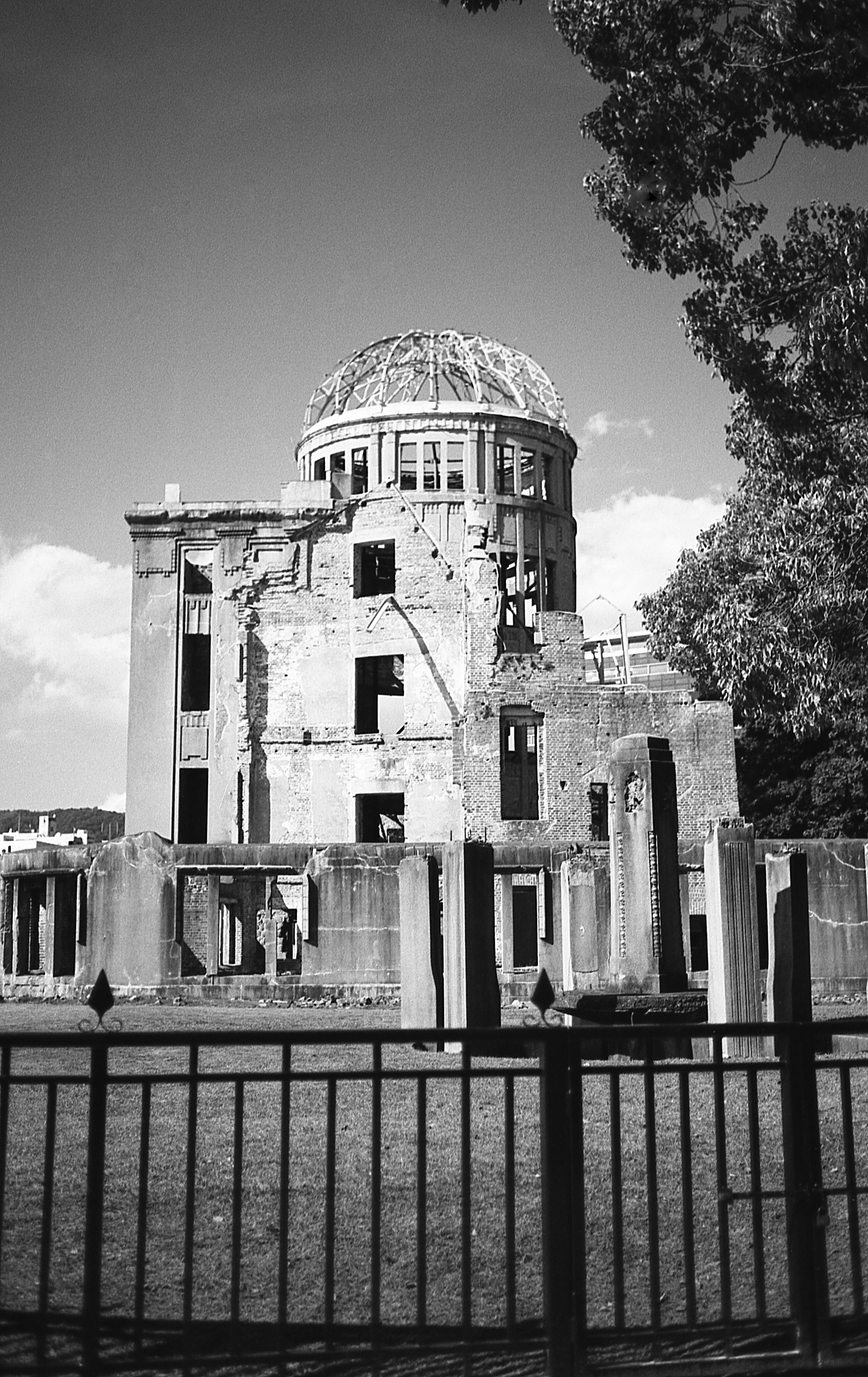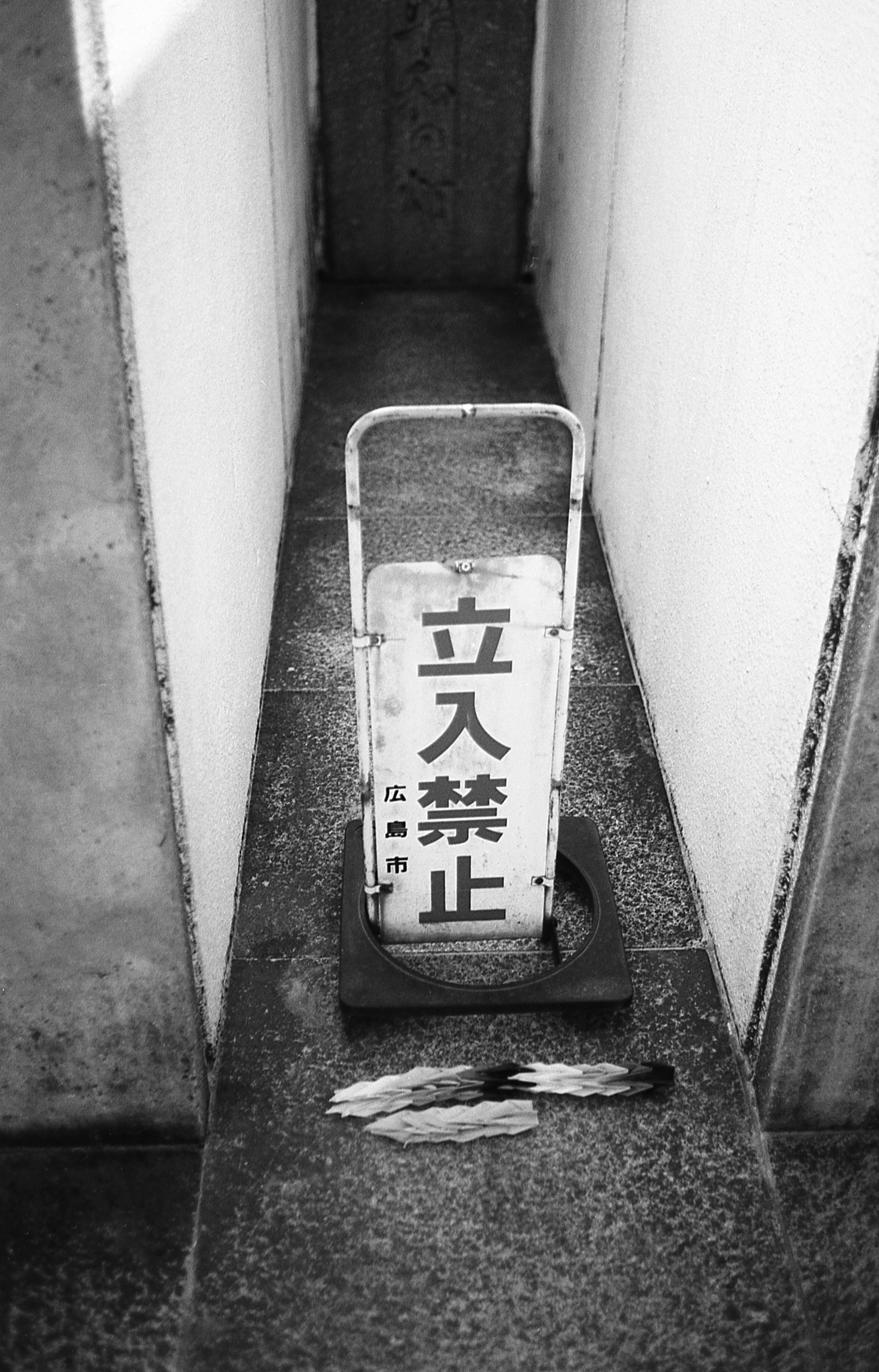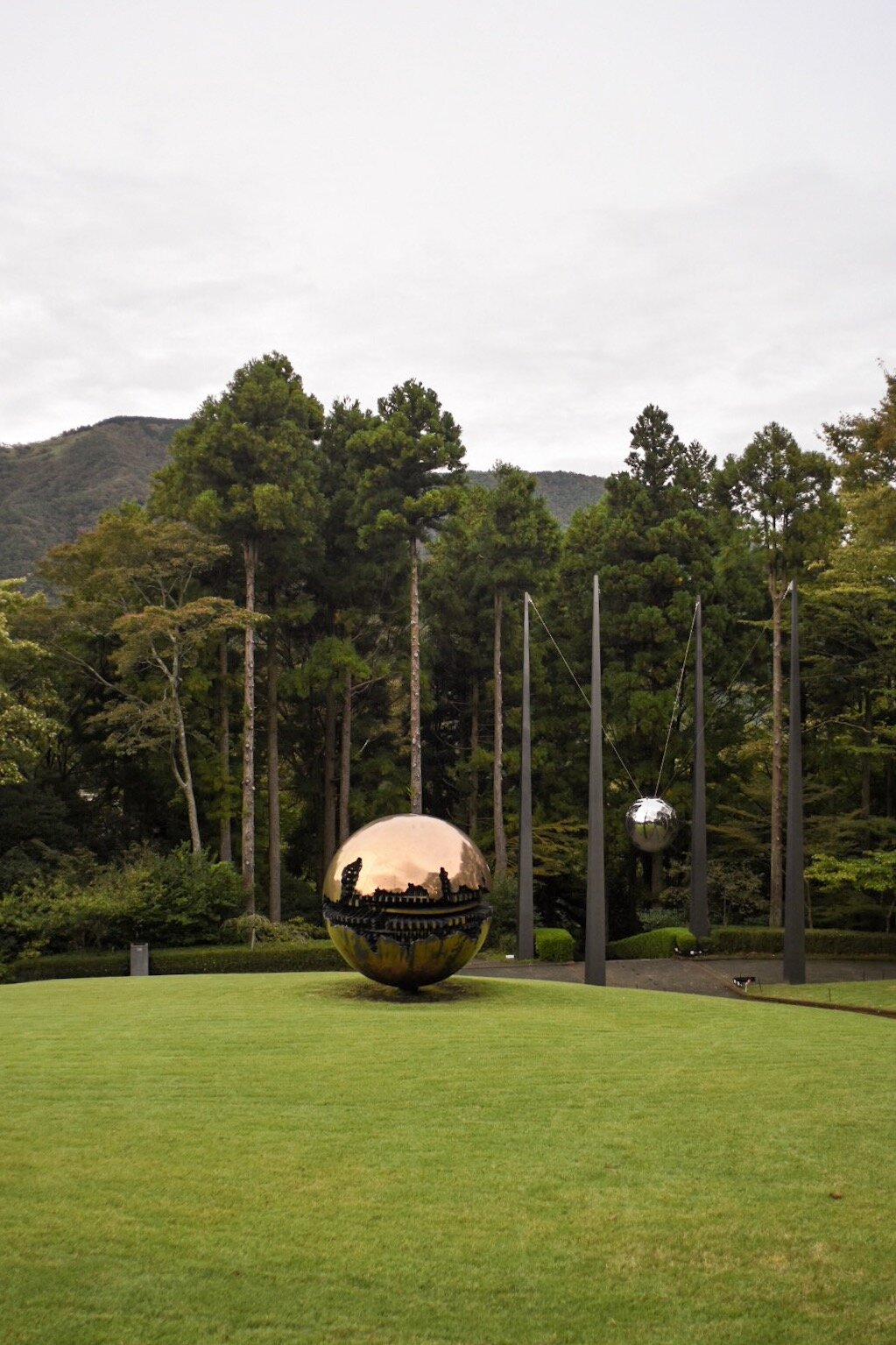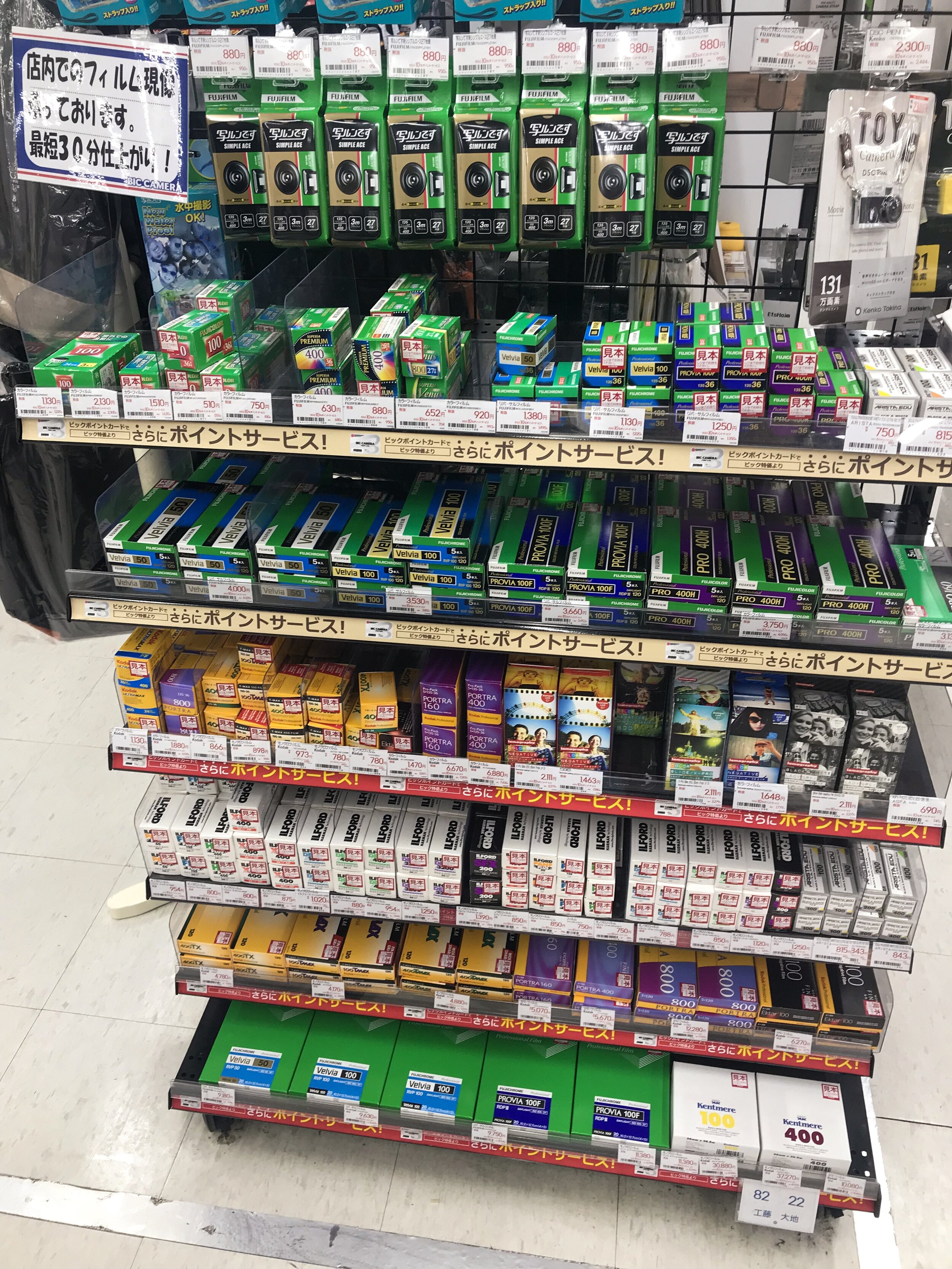Last fall, I went to Japan for twelve days. I planned and planned. I took 24-hours of Japanese lessons with a teacher in Japan, via Skype. I calculated train costs and deciphered the Japan Rail Pass rules. I found a Ryokan and determined if they would be okay with my tattoos. I planned for a pocket Wi-Fi router to be sent to our first hotel. Research is part of my profession and I can’t help when it spills over into endless preparation for trips.
I knew that we were trying to fit as much as possible into twelve days: two nights in Tokyo, a night in Hakone, two nights in Kyoto, a day in Hiroshima, a night near Naoshima, a night in Naoshima, a night in Osaka, and three more nights in Tokyo. Thanks to high-speed trains and vending-machine coffee, this was all very possible. We also took regional rail, subways, a ferry, and a cog-railway. All of these travel options were seamless, easy, and on time. My worries about transportation were rather needless. Almost everywhere we went transportation signs were in English. I was happy that I could read hiragana and understand basic announcements, but it wasn’t necessary.
After arriving in Tokyo around midnight, we took a taxi to a hotel. The airport monorail doesn’t run after midnight, so I knew we’d be taking an expensive taxi. It was raining and my first views of Tokyo were as I imagined: foggy and distorted. We forced ourselves, jet-lagged, to walk around Tokyo on the first day. We wanted to visit camera stores: Lemon Camera, Yodobashi, Chuko Camera Box, and other used-camera stores.
Foodwise, I had a goal to eat certain pizza in Tokyo. We had lunch at Savoy; it was perfect, Neapolitan-style pizza. After lunch we walked around department-store-grocery-store basements and ate sushi. We had coffee at Blue Bottle in Roppongi. Then we took a nap before meeting my friend’s friends for dinner.
I have to thank my best friend from high school, Sara, for setting us up with her friends in Tokyo. They took us to a restaurant for dinner that we probably wouldn’t have found and would never have had the same experience without them. We arrived in Tokyo during the few days that Tsukiji Market, the famous fish market, changed locations (due to the upcoming Tokyo Olympics). As such, some restaurants were closed because they couldn’t procure any fish. Yet, Sara’s friends found an open restaurant, with fish, near our hotel in Ginza. The experience was all that I wanted a traditional Izakaya to be: tatami mats, horigotatsu seating (a built-in low table) in a semi-private room, whiskey high balls, and endless food. We were up for eating everything they ordered: Hamachi collar, sting ray, yakitori, sushi, eggplant, anything. The restaurant was packed, and everyone seemed to be having fun on a Thursday night.
The next day we were still jeg-lagged, but we had discovered the joy of ubiquitous vending machines. On every block, in every station, these machines offer many kinds food and beverage: most notably, hot beverages. I wish America could have vending machines that offered hot coffee, in a can, for about a dollar. After a day or two, Coffee Boss had earned our brand loyalty.
Can of coffee in hand, we walked to Tokyo Station to validate our 10-day Japan Rail Passes. This process was easy. I had read about how you show your pass at the gates, downloaded the necessary app, and figured out which trains we could and couldn’t take (you can’t take the fastest trains with the Rail Pass). We took the train to Odawara and transferred to the cog-railway, up to Hakone. We stowed our bags at the railway station and had lunch at Gora Brewery (excellent beer and chirashi) and went to the Hakone Open Air Museum. I was on a specific mission for someone to take a photo of a certain sculpture. The museum was well manicured and eerily quiet. We went back to the railway station to meet a ride up to our ryokan: Mizu no Kaori. We were served an endlessly large dinner in our room. Then our room was made up for bed. In the morning we went separately to the onsen. After an awesome breakfast of grilled fish, eggs, and pickled vegetables, we left for Kyoto.
I had heard about the differences between Tokyo and Kyoto. Tokyo is the capital, but Kyoto is the cultural capital. While comparison is possible, there’s almost no comparison. I loved Kyoto the moment we walked out of the train station: the sun, which we hadn’t seen in Japan, was shining and the sky was cerulean blue. I may have been ready to love Kyoto, but I felt what everyone had said, immediately. We stopped by Bic Camera, bought more film, and checked into our Airbnb. After a short rest, we walked to Kennin-Ji Temple and found a place for dinner. I wanted some sort of traditional vegetable restaurant and we found it. On the meandering walk back, we had a drink at Bar K. The city was peaceful and quiet and temperate.
The next day we found delicious pastries at Rauk, followed a coffee recommendation to Kurasu, and rented bikes. The city is very flat and surrounded by mountains in the distance. Biking seemed like a good idea to be able to see as much as we could. We biked 20 miles around the city to Nanzen-ji Temple, the Philosopher’s Path, ramen, and Kinkaku-ji temple. At sunset, we returned the bikes and took the subway to Arashiyama Bamboo grove; the week before, a hurricane hit Japan and the bamboo grove was somewhat damaged. We made one more stop to see the Fushimi Inari Shrine, in the dark. After, we ate a late-night fried-chicken dinner and more ramen.
I could have stayed in Kyoto longer. I know that when I return to Japan, I’ll spend more time in this ancient-feeling city. I was, perhaps, slightly primed to enjoy Kyoto so much. My friend’s family is from there and we messaged on Instagram the whole time. It was a lovely connection: to be the geographically furthest I’ve ever been from home, yet so in touch with people who knew exactly where I was.
Next, we had a very busy day. We took our longest train ride to Hiroshima. But, before seeing Hiroshima, we took regional rail to the Mazda factory tour. Then we returned to Hiroshima to wander and visit the peace memorial. But, first, we ate amazing okonomiyaki (a savory pancake with various ingredients) at the train station. This version wasn’t like anything I had ever seen before; it was made on a flat top in a manner reminiscent of how you see cheesesteaks made in Philly (a whole pile of stuff, raw, on one side, waiting to be moved over and cooked). The shop inside the station was more like a diner; everyone was in and out. On our walk to the memorial, we wandered through partially covered outdoor malls that felt like European arcades.
The Hiroshima Peace Memorial is beyond words. The Dome and memorial park are quite moving. It was a gorgeous, cloudless day, on our visit. The bright sunshine was an incredible contrast to the destruction that took place there. As someone who studies U.S. history, I have more than enough to say about it, but I’ll stop here. I was grateful to have visited and felt the place.
Afterwards, we walked around the bright city, had coffee at Obscura Coffee Roasters, and found an awesome camera store in the train station. The store had a huge supply of Acros100. We were there right after the announcement that this iconic film would be discontinued (it’s since been revived, as Acros II). I bought 12 rolls. After the day in Hiroshima we had to get to Kurashiki: a small town that would put us closer to Naoshima.
Kurashiki was the only place we went where English was less common. We found dinner at wine bar/restaurant: seemingly the only restaurant open. The one guy who made food and took orders didn’t speak much English and the menu was entirely in hand-written Japanese. This was the only time that my Japanese lessons paid off. I was able to read “omakase” and realize that there were options for different numbers of courses. I ordered a seven-course omakase for both of us. Then, from there, the guy would show us on google translate what we were eating. He was very nice, and the food was excellent.
The next morning, we took three trains to get to the ferry to Naoshima: an art island off the southern coast. The trains became progressively filled with English-speaking people who were on the same art pilgrimage to Naoshima. The local train that goes to the ferry was full of artsy people with trendy glasses and tote bags. I poke fun, but I was also on the train.
After the quick ferry, we walked to our Airbnb and left our bags. I read a bunch about renting electric bikes on Naoshima. Transportation options are limited on the island. The one rental place near the ferry was sold out, but I had read that our Airbnb rented electric bikes. They had two, at very reasonable rates, and we took those to ride around the island. This was my first electric bike experience. They are awesome and absolutely necessary on this hilly island. We rode to the other side of island for lunch at Apron Café. Then, for art, we went to the Tado Ando house, Benesse Museum, and Kusama’s Yellow Pumpkin. We had dinner at a traditional style place: Kagawa. The five-course meal included sushi, red snapper head, and horse mackerel. The next morning, we had reservations at Chichua Art Museum. This was a very cool experience. Chichua confirmed the Donald Judd principle that I’ve become quiet attached to: the art work of one person should be shown together, in one space, permanently. The museum has large, site-specific work by Walter De Maria that blew my mind.
After Naoshima, we spent one night in Osaka. This wasn’t enough to give the city a good chance. We arrived in the afternoon, had coffee, and walked around. Our main food priority in Osaka was kushiyaki: grilled or fried food on a stick. We ate gyoza from a food vender and then sat down for dinner in Dotombori. We ordered rounds of kushiyaki and beers; the food arrived a conveyor belt and you cook it on the grill at your table. It’s a simple thing, but something that I’ve never experienced elsewhere. Osaka is billed as the town where young people go to party. We weren’t really interested in the night life (anywhere, really), so we walked home and left early for Tokyo, the next morning.
With three more nights in Tokyo, our priorities were photography and food. I choose a tiny Airbnb apartment in Shinjuku. I wanted to experience a different part of the city. Most days we wandered, took pictures, and stopped for food. Food highlights include: tsukemen ramen (you dip the noodles in a dark broth), coffee at 4/4 Seasons Coffee (another excellent recommendation), must-have pizza at Seirinkan(possibly be best pizza I’ve ever had), gyoza in Harajuku (as well as people watching), pork katsu (tonkatsu in the food court of the same building Yodobashi Camera in Akihabara), and sushi in the restaurant section of Ikebukuro Station.
For sites to visit, there are endless shrines to choose from; I decided that we could not go wrong since everything was beautiful and new to us. We saw the Imperial Palace, Meiji Jingu shrine, and Sensō-ji shrine. Also, I really wanted to see Frank Lloyd Wright’s 1956 Jiyu Gakuen Girls’ School. I wanted to see the visual contrast of a Wright building in Tokyo.
Overall, I can’t believe that it took me so long to visit Japan. It was the best trip that I’ve ever taken. The ease of travel, food, and safety was beyond my expectation. I’d considered a solo trip, many times; I know, now, that it would have been easy. It’s hard for women to find a safe place to visit alone: Japan is definitely it.
I realize that Japanese culture is very prone to fetishization. I tried not to engage in any of that. I attempted to learn Japanese and follow customs. I observed the beauty and the cultural uniqueness. I saw what I could, but there are so many corners and alleyways, it’s impossible to ever see it all. So, I will return to visit other regions and wander the streets, with a camera or two in hand.
Nikon F4, PanF50+, Hiroshima, JP
Nikon F4, JCH, Tokyo, JP
Nikon F4, PanF50+, Hiroshima, JP
Nikon F4, PanF50+, Hiroshima, JP
Nikon F4, PanF50+, Hiroshima, JP
Nikon F4, PanF50+, Hiroshima, JP
Nikon F4, PanF50+, Hiroshima, JP
Nikon F4, PanF50+, Hiroshima, JP
Nikon F4, PanF50+, Hiroshima, JP
Nikon D7200, Hakone, JP
Nikon D7200, Hakone, JP
iPhone 7, Hakone, JP












































